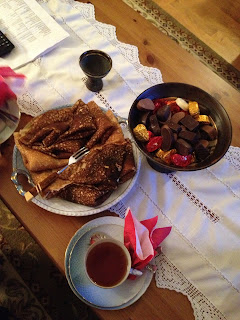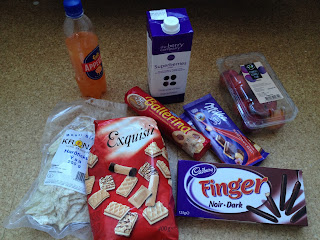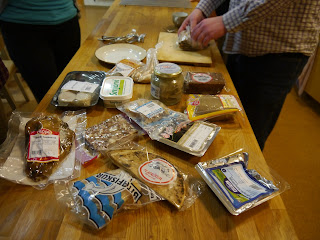March 23rd
is a special day. At 10 o’clock, I heard one of the most inspiring stories from
Emily. At 8:30 pm, earth hour began.
From my
environmental philosophy, I value the role of government more than other
factors. I think government regulation is the most direct and effective way to
change the society; I think it is too hard for an individual to make a
difference especially under the government’s obstacle. However, I was totally
shocked when I saw how much impact Emily has made on her campus. When Emily and
her friends gathered together, they did not even know what they were going to
with the trash, but they made everything happen. They prevent tons of objects
from landfill; they make thousands of dollars from selling “trash”. I also saw
that as long as the first person stands out and guide people, they are more
than willing to participate in environmental protection projects. I have been
overlooked the role of the public for so long that I underrated their how many powerful
effects they could bring. I start to understand Emily’s bottom to top
environmental philosophy. Then I questioned myself what I can do but have not
done in environmental protection. I noticed that my actual actions have fallen
far behind my environmental ideas. I felt exhausted after Emily’s presentation
due to the huge shock it brought to my current philosophy. On the other hand, I
also felt energetic, because her story made me confident about what I can do
and made me notice that I need to start now.
I also gradually
notice that I am more activism during these two months. I become more
open-minded to hear voices expressing different approaches in environmental
conservation. Simultaneously, I become less tolerant to hear opinions which are
lack of environmental consciousness. At 8:30pm, our CELL group turned off our
lights and went out to remind people of earth hour. I am glad to see people are
willing to cooperate when we remind them. However, I saw many people on the
internet arguing that households lighting does not consume much energy, but
using candles do cause carbon dioxide emissions. They said turning of lights is
not an earth hour, but an hour makes people feel good about themselves. One Chinese
actor was even criticized for his photo with candles. I was shocked, second
time in one day. I believe the initiator of the earth hour does not count on it
to save energy, but to spread environmental consciousness to everybody that everyone
can participate and every tiny thing can help change the world. I did hear that
due to the setup of the turbine cannot easily change, the energy saved by turning
off lights will lose anyway, but I am surprised that people are using this
science to taunt those who want to contribute their effort to make a difference.
As a result, I spent a night arguing with that random people over the internet
about how to protect the environment. However, I quickly noticed that we were
unable to convince each other, we both had firmly believed theory. This is
another lesson to me.
Environmental conservation
is a long way to go. Thank you for CELL program and my classmates for teaching
me so much about everything so that I can develop my own understandings and
philosophy so quickly. I hope one day I can be somebody who made a difference
and made a impact on the society, on the environment, and maybe on you.
Chen



















